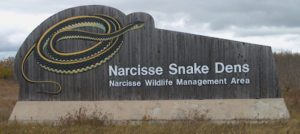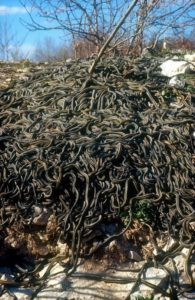





slider1
slider7
slider3
slider6
slider4
slider5

The Canadian province of Manitoba has a remarkably distinct springtime attraction too: tens of thousands of amorous snakes writhing around in pits.
While Manitoba’s tourist agency doesn’t promote the Narcisse Snake Dens with the same zeal as it does Canada’s national human rights museum in Winnipeg, the annual mating ritual of red sided garter snakes nevertheless manages to draw thousands of people, snake fanciers and snakephobes alike, to an otherwise overlooked part of the province for a few days each spring.

The area around Narcisse is so attractive to snakes for the same reasons many farmers abandoned it decades ago: Its thin topsoil sits on top of limestone that water has gradually eroded underground, creating a network of small caves that can be entered through sinkholes.
In a place notoriously cold even for Canada, this is the perfect winter home for snakes.
 The eruption of the snakes each spring, and the 10 days they spend cavorting in celebration, is weather dependent, and hard to predict. Clouds, cool temperatures and rain can all keep them underground.
The eruption of the snakes each spring, and the 10 days they spend cavorting in celebration, is weather dependent, and hard to predict. Clouds, cool temperatures and rain can all keep them underground.
Many years, they slither out in time to make snake viewing a popular Mother’s Day outing. This chilly spring, they emerged toward the end of May.
“It is likely the biggest concentration of snakes in the world” said Prof. Robert T. Mason, a professor of integrative biology at Oregon State University, who has come to Narcisse every spring since 1982.
“It’s amazing to me how many people want to see these snakes.” he said. “They are perfect ambassadors for the reptile world.”
The snakes are harmless to people. While they can bite, the effect is more like a head butt than a tearing of flesh.